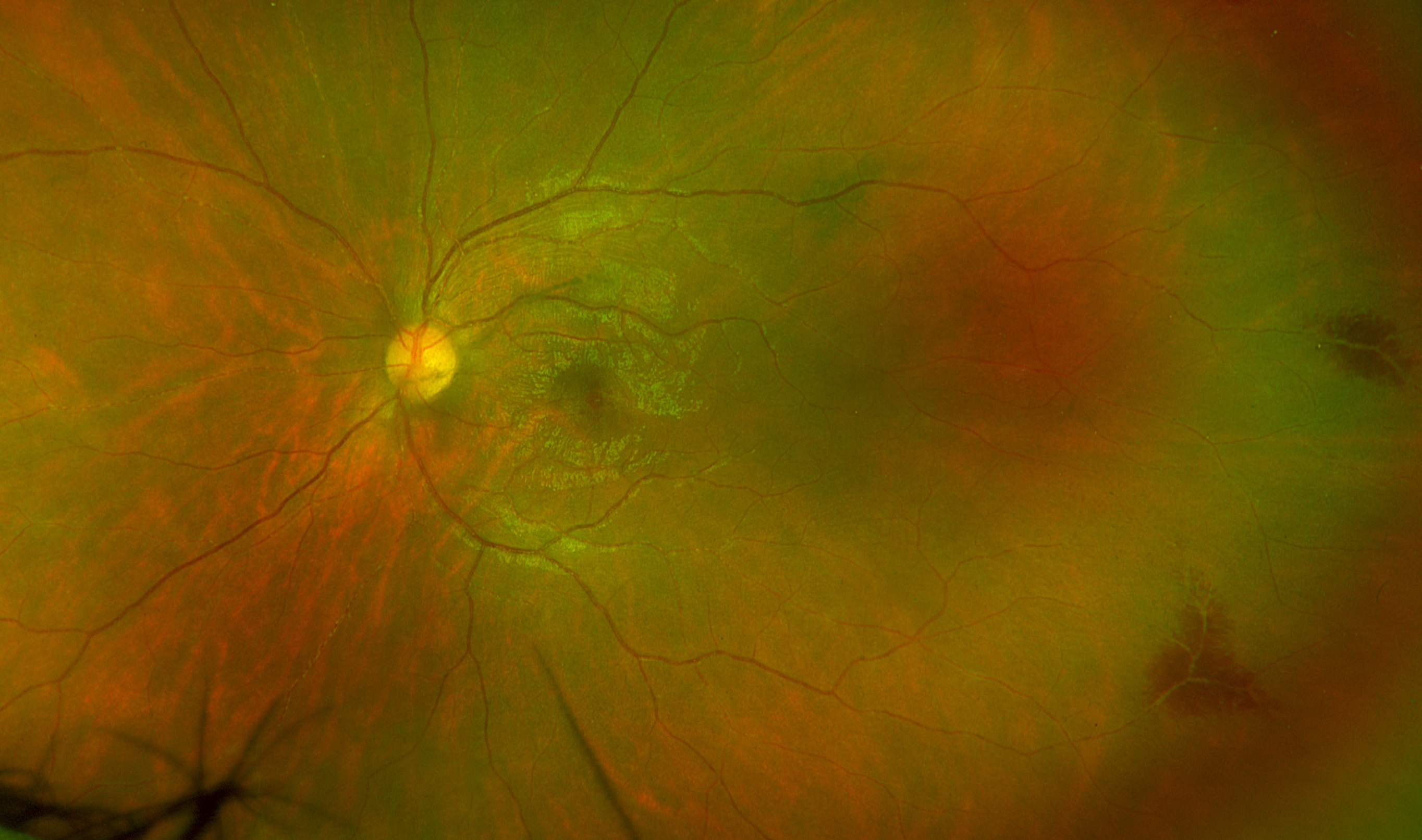 |
| Those with panuveitis or posterior uveitis in particular experience significant hardships, highlighting the need for validation of uveitis-specific patient-reported outcome measures, the authors suggested. Photo: Rami Aboumourad, OD. Click image to enlarge. |
Blindness caused by uveitis, and complications like glaucoma, cataract and macular edema, loom large over management of this often-intractable condition. In a recent study, researchers from the University of Toronto aimed to evaluate the “humanistic burden” of non-infectious uveitis (NIU). This newer concept combines patient quality of life and overall state of well-being with any associated impact on caregivers from their long-term responsibilities to the patient. The team found that patients had a worse quality of life with significant impacts on functioning day to day, as well as their mental and physical health. Their paper on the work was recently published in American Journal of Ophthalmology.
A total of 68 studies pertaining to the health-related quality of life of 8,403 patients with NIU were included, and 10 studies were included in the meta-analysis.
This review shows that NIU patients face a significant but under-addressed humanistic burden that encompasses symptomatic effects, psychological impact, daily activity challenges, concerns about recurrence, side effects, financial strain and reluctance to socialize during flare-ups.
The impact of quality of life differed in adolescents and children compared to adults. Children were found to miss school for treatment, had anxiety about catching up, experienced social challenges like bullying as well as emotional distress over their condition.
Patients with panuveitis or posterior uveitis had worse quality of life than those with anterior uveitis, with significant impacts on daily functioning and job security. “As expected, vision is critical in influencing quality of life,” the authors wrote in their AJO paper. “Vision impairments associated with active disease and treatment may impact daily functioning with disruption of reading, computer work, and driving, with a significant proportion of patients experiencing job insecurity and increased stress levels even with non-active disease.”
Mental health conditions, NIU-associated systemic diseases (e.g., juvenile idiopathic arthritis, spondyloarthritis) and inadequate treatment worsened quality of life, “highlighting the need for validation of uveitis-specific patient-reported outcome measures,” the researchers wrote.
Systemic immunosuppressive treatments also led to poorer health outcomes. “Although newer therapies such as biologics and implants show promise, physical health improvements remain limited and mental health often declines,” the authors wrote. Though immunosuppressive antimetabolite therapy can improve visual function, physical and mental health remains largely unchanged. “The side effects of these agents can cause negative emotions in patients, such as depression, anxiety and stress.”
The authors found that prolonged use of corticosteroids and immunosuppressants cause side effects that compound the disease burden, such as growth delays in children, mood changes and vision impairment. Some vision-specific issues, such as cataracts, glaucoma, vision impairment and discomfort, overlap with symptoms of underlying systemic diseases, making it challenging to differentiate between treatment side effects and the disease itself, the authors noted. “This overlap worsens both the mental and physical health of patients, adding psychological stress as they manage side effects alongside their existing condition.”
Future studies should include further research into quality of life in diverse, understudied populations as well as understanding the psychosocial impact of NIU on caregivers and support interventions to mitigate these effects, the researchers advised.
| Click here for journal source. |
Sriranganathan A, Grad J, Miranda RN, et al. Humanistic burden of non-infectious uveitis: a systematic review and meta-analysis. Amer J Ophthalmol. October 28, 2024. [Epub ahead of print.] |


